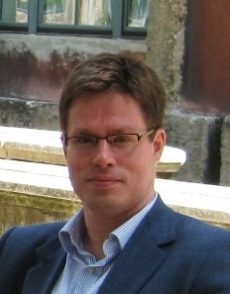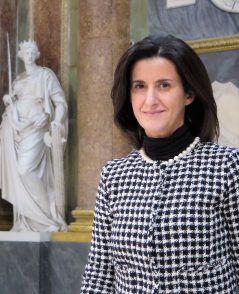Keynote Speakers
Wind engineering for beach houses & offshore wind farms
CFD modelling, assimilated with field data, scaled testing in atmospheric boundary layer wind tunnels and water flumes are the research tools for coastal and offshore engineers. The talk will address research carried out at the von Karman Institute for Fluid Dynamics studying the effect of beach houses on sand transport reduction towards coastal dunes, and the effect of extreme weather events on the Belgian offshore wind farms leading to extensive loading, rain erosion and lightning-driven damage of wind turbine blades.
Short bio: Dr. Jeroen van Beeck received in 1992 his MS degree in Applied Physics from Eindhoven University of Technology (The Netherlands). In 1993 he obtained a Research Master Degree in fluid dynamics at the von Karman Institute for Fluid Dynamics (VKI). His PhD degree is from TU/Eindhoven, following research on optical diagnostics of particles and droplets, carried out in collaboration with VKI. Since 1997 he is professor at VKI. In 2018 he became head of the Environmental & Applied Fluid Dynamics Department and Dean of Faculty. His current areas of research include weather modeling, LIDAR-Doppler instrumentation, microclimate assessment, CFD modelling of wind farm flows, and scaled testing in atmospheric boundary layer wind tunnels and water flumes for coastal and offshore engineering.
Non-synoptic wind storms: Modelling and effects on structures
During the last two decades, the wind engineering debate was dominated by the issue of non-synoptic wind storms, Hangan and Kareem, 2021. These winds (e.g tornadoes, downbursts, gust fronts) are way more complex, from a spatio-temporal perspective, compared to the typical synoptic winds. Given these complexities, we attempt to characterize them and their effects through superpositions of isolated flows and their vortex structure, instabilities, translation and turbulence. We present results of their effects on buildings and structures and point out to remaining issues to be addressed such as the non-linearity of these possible superpositions or the definition of references.
Reference:
Hangan H., Kareem A., The Oxford Handbook of Non-Synoptic Wind Storms, Oxford University Press, 2021
Short bio:
Dr. Horia Hangan is a full Professor and Tier 1 Canada Research Chair in Adaptive Aerodynamics, Faculty of Engineering and Applied Science, Ontario Tech University, Canada. He received his Diplomat Engineering Degree in Aeronautics from the Polytechnic University of Bucharest, Romania in 1985, continued his graduate studies at Ecole Polytechnique Federale de Lausanne (EPFL) in Switzerland in 1991-1992 and obtained his Ph.D. in Wind Engineering at the Western’s Boundary Layer Wind Tunnel Laboratory in 1996. After postdoctoral studies at Universite de Poitiers in France he rejoined Western in 1997 as a faculty member with the Boundary Layer Wind Tunnel Laboratory and the Department of Civil and Environmental Engineering. In 2009, Professor Hangan received a 30 million dollar grant by federal (Canada Foundation for Innovation) and provincial (Ontario Research Fund) funding agencies to design and built the WindEEE Dome. WindEEE is a world novel facility meant to reproduce and study the impact of any type of wind systems on the man-made and natural habitat. Professor Hangan’s research is in the simulation and impact of high intensity winds (downbursts and tornados), wind energy (sitting in complex terrain, wind turbine blade aerodynamics) and wind environmental impacts (atmospheric pollution-dispersion, particulate transport). He authored more than 200 journal and conference publications, acts as reviewer and is part of the Editorial Board of several international journals such as Journal of Fluid Mechanics, AIAA Journal, ASME Journal of Fluids Engineering, ASME Journal of Solar (and Wind) Energy, Journal of Wind Engineering and Industrial Aerodynamics. He has received several awards among which the prestigious ASME Moody Award in 2010.
Risk assessment and resilience of SeaPort infrastructures under extreme winds
The extreme weather conditions are negatively impacting an increasing number of communities and industries across the globe. Because of their coastal locations, ports, in particular, are exposed to extreme weather occurrences and are greatly affected by weather risks. They are often battered by increasingly severe storms, which can lead to operational issues, economic losses and, most of all, safety hazard for port crews. Since ports are usually located near urbanised areas, safety issues that arise from these conditions can also extend to the public in the surrounding area. It is crucial that ports are able to avoid wind-related problems before they happen and mitigate the effects of any unavoidable weather events.
Wind engineering community can lead the research and technological transfer, providing the know-how that is needed to proactively manage the threat of wind at ports, to mitigate the risk and improve the resilience in the face of accelerating weather.
Short bio: Dr. Maria Pia Repetto is full professor of structural engineering at Department of Civil, Chemical and Environmental Engineering of the University of Genoa (Italy). She is member of the Giovanni Solari Wind Engineering and Structural Dynamics Research Group (GS-WinDyn), working in the multidisciplinary field of interactions between wind and structures (http://www.windyn.org). She is actually leading the Horizon Europe ERIES project “Engineering research infrastructures for European synergies” (2022-2026) providing transnational access to advanced research infrastructures in the fields of structural, seismic, wind and geotechnical engineering. She has been team member (2017-2020) and responsible (2020-201) of the Horizon 2020 THUNDERR project “Detection, simulation, modelling and loading of thunderstorm outflows to design wind-safer and cost-efficient structures” financed by European Research Council (ERC).
Maria Pia Repetto is author of 125 scientific publications mainly addressed to wind engineering problems involving the analysis of wind-induced actions, response and fatigue of structures, risk assessment of infrastructures under wind actions, the wind fields modelling in urban environment, the analysis of thunderstorm wind flow and structural response, the full-scale monitoring of slender structures. The outstanding achievements and original contributions of her research have been awarded by the Junior Award 2011 from International Association for Wind Engineering (IAWE) and by the Raymond C. Reese Research Prize 2014 from American Society of Civil Engineer (ASCE-SEI).



